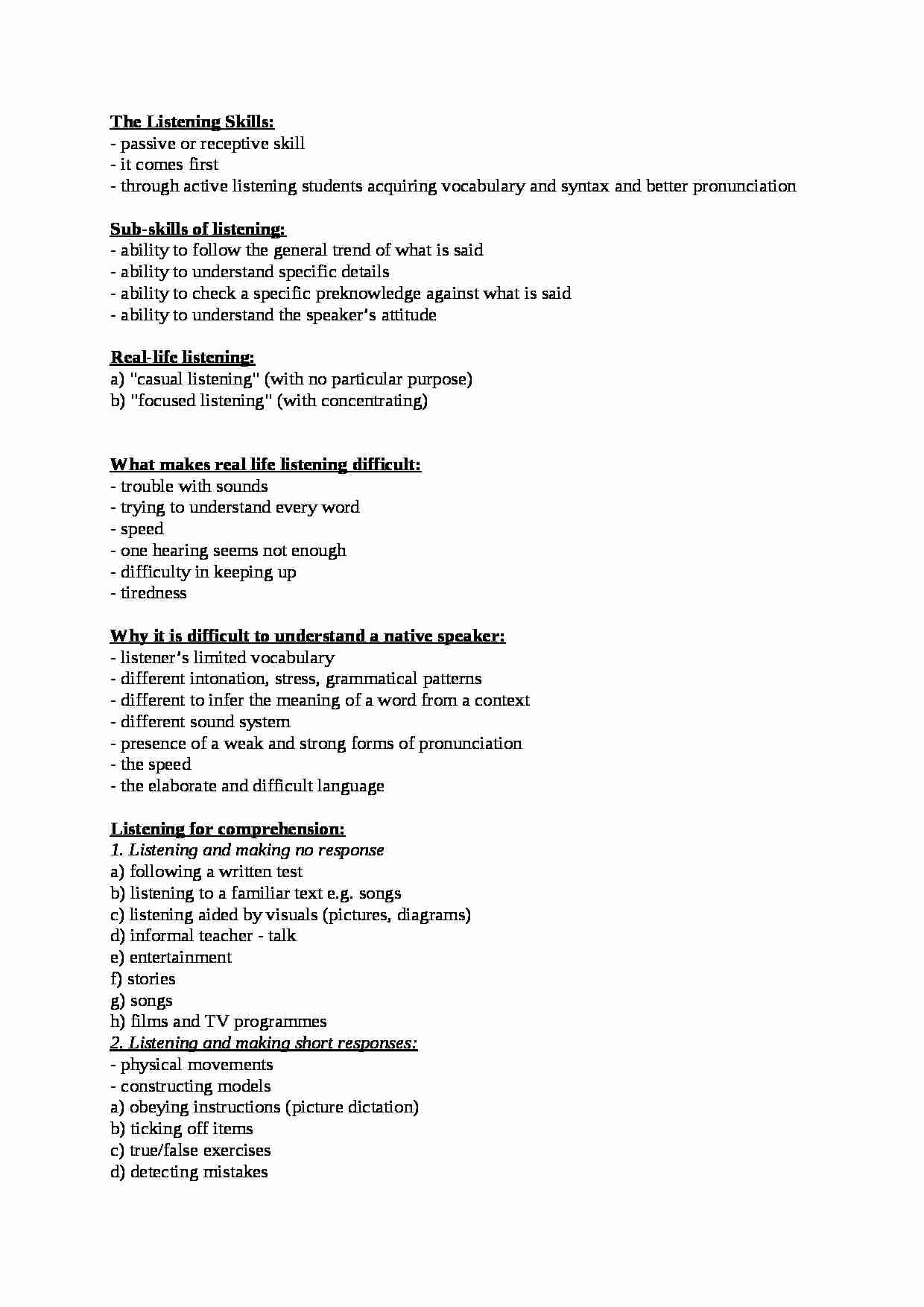To tylko jedna z 2 stron tej notatki. Zaloguj się aby zobaczyć ten dokument.
Zobacz
całą notatkę


The Listening Skills:
- passive or receptive skill
- it comes first
- through active listening students acquiring vocabulary and syntax and better pronunciation
Sub-skills of listening:
- ability to follow the general trend of what is said
- ability to understand specific details
- ability to check a specific preknowledge against what is said
- ability to understand the speaker's attitude
Real-life listening:
a) "casual listening" (with no particular purpose)
b) "focused listening" (with concentrating)
What makes real life listening difficult:
- trouble with sounds
- trying to understand every word
- speed
- one hearing seems not enough
- difficulty in keeping up
- tiredness
Why it is difficult to understand a native speaker:
- listener's limited vocabulary
- different intonation, stress, grammatical patterns
- different to infer the meaning of a word from a context
- different sound system
- presence of a weak and strong forms of pronunciation
- the speed
- the elaborate and difficult language
Listening for comprehension:
1. Listening and making no response
a) following a written test
b) listening to a familiar text e.g. songs
c) listening aided by visuals (pictures, diagrams)
d) informal teacher - talk
e) entertainment
f) stories
g) songs
h) films and TV programmes
2. Listening and making short responses:
- physical movements
- constructing models
a) obeying instructions (picture dictation)
b) ticking off items
c) true/false exercises
d) detecting mistakes
e) aural cloze (like a cloze text, with a written or without written text)
f) guessing definitions
g) noting specific information
h) pictures (identifying and ordering altering and marking)
i) maps
j) ground plans
k) grids - rectangles marked off into squares to display different kinds of information
l) family tree
m) graphs
3. Listening and making longer responses
a) repetition and dictation
b) paraphrasing
c) translating
d) answering questions
e) foreseeing
f) filling blanks/gaps
g) summarizing
4. Listening as the basis for study and discussion
a) problem solving
b) jigsaw listening
... zobacz całą notatkę




Komentarze użytkowników (0)